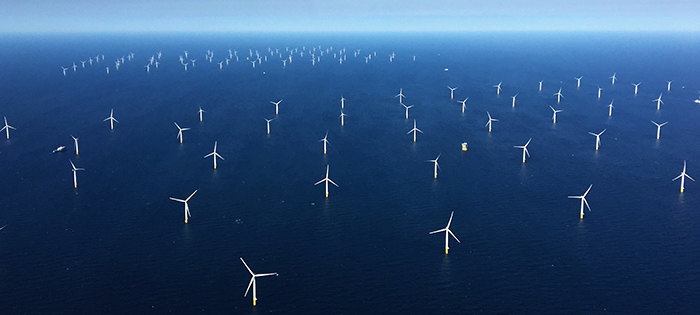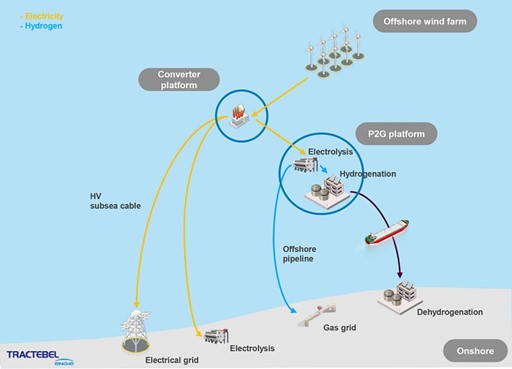- Renewable Generation
- carbon reduction
- Offshore Wind
- Greenhouse Gases
Harnessing Offshore Wind for Green Hydrogen

The increased focus on sustainability, accelerated urgency to decarbonize, and decreased capital cost of renewable power generation creates an opportunity for the production of carbon dioxide-free hydrogen. The production of carbon dioxide-free hydrogen happens by running electricity through water, which is called electrolysis. Green hydrogen, or hydrogen produced from renewable energy, is gaining interest across both mobility (by powering fuel cell vehicles) and industrial sectors while countries affirm their national clean energy targets. As renewables curtailment due to overproduction is becoming fairly common across electricity grids, the hydrogen economy offers a growing opportunity to convert this excess hydrogen into power-to-gas.
New Technology Decarbonizes Hydrogen Creation
In a recent announcement, Tractebel claims to have developed a technology to produce industrial scale hydrogen using electrolyzers from offshore wind power. According to Tractebel, the offshore platform will accommodate all the technical components such as electrolysis units, transformers, and desalination plants for producing high purity water required for electrolysis. This plant is expected to be scalable, delivering up to 400 MW of electricity and easily implementable across offshore plants in the North Sea. Design costs and plant efficiency will be the two most critical factors impacting the scale economics for these offshore platforms.
Introduction to Hydrogen Offshore Pathways

(Source: Tractebel)
More than 95% of current hydrogen production is fossil-fuel based, with steam-methane reformation as the most common method of production. Despite this, investments in hydrogen from offshore wind power could offer exciting opportunities for both wind farm operators and industrial users of hydrogen. A recent Guidehouse Insights, report, Electrolyzers, explores the global market for electrolyzers based on geographic region and hydrogen end use. The report provides an analysis of current market issues, drivers, and identifies various opportunities for renewable resources stakeholders.
Decarbonization Spawns New Market
Resilience of renewables has been a topic of discussion across many energy forums, and the power-to-gas applications can be used to contribute to renewable energy portfolios globally. Continued emphases on battery storage and similar cost-effective alternative technologies could, however, restrain short-term market growth if not supported by adequate government incentives, subsidies, and carbon taxes. Sustaining the commitment to global decarbonization will be crucial to the development of a green hydrogen market.